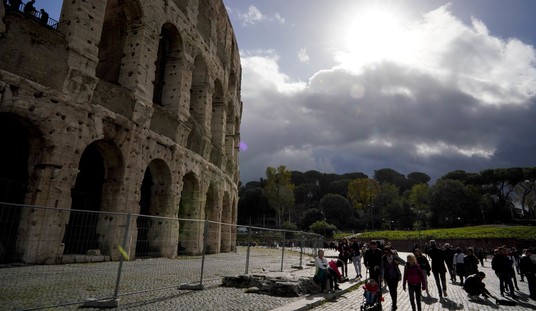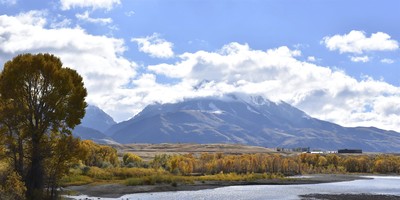Editor's note: This column was co-authored by Tom Harris.
In the push for strong action at this year's United Nations climate change conference in Katowice, Poland, a common refrain is that rising carbon dioxide levels (CO2) will supposedly result in global warming that will increase the incidence of disastrous wildfires.
“The longer we wait, the more our communities will suffer under bigger wildfires...,” wrote Lou Leonard of the World Wildlife Fund on December 4.
This is totally wrong, but then World Wildlife Fund got their recent claims of animal populations wrong as well.
Rising temperatures and increasing CO2 both act to increase soil moisture and so reduce the potential of fires. When temperatures rise, evaporation increases, causing more precipitation which increases soil moisture and so lessens fire risk. As CO2 rises, stomata, the pores in plant’s leaves, are open for shorter lengths of time. Plants therefore lose less water to the air and so more of it stays in the soil, again reducing fire potential.
Due to these factors, as well as the fact that we now put out fires that would have burned for weeks in centuries past, there has been a significant reduction in forest fires over the past 100 years. In fact, analysis of sediment cores off the Pacific coast of Canada reveals that the incidence of wildfires has reduced since Europeans settled in North America.
Regardless, a closer look at the issue reveals that fire has benefits as well as risk.
Fire has allowed humans to live in areas where the climate would normally preclude our survival. It allowed us to cook and soften food that was ordinarily indigestible. In many areas, people set fires under controlled conditions to drive game into traps. A classic example was the grassfires used to drive bison over cliffs to provide food such as at Head-Smashed-In Buffalo Jump in Alberta.
Recommended
Fire is also an essential part of the natural cycle. It clears off dead debris as plants go through their lifecycle. There is a special area of botany called Fire Ecology that studies the role and importance of fire in ecosystems. In most ecologies, especially forests, many plants require fire to soften or open the seeds to start life, although the seed shell must survive the fire first.
One example of such a seed occurs in the vegetation of what is called a Mediterranean climate. California is an example of this type. It is a unique climate zone because 70 percent of the precipitation occurs in the winter. All other climate types have either 70 percent in summer or even distribution throughout the year.
A Mediterranean climate results in a unique vegetation called Maquis in Europe and Chaparral in California. The annual climate cycle that makes this an area that requires fire to be healthy has a hot, dry, summer that shrivels the plant but the seeds survive. At the end of the summer, lightning occurs as rain clouds begin to form and that triggers fires that burn off the plants but leave many of the seeds intact. Mudslides follow as the rainy season progresses. Fortunately, the seeds germinate quickly and stabilize the soil.
The natural cycle of forest fires creates what are called crown fires. They move through quickly, burning off dead debris but leaving most of the plants still alive. When governments decided to stop forest fires, they upset the natural dynamics completely. The bureaucracies, now populated by graduates of the biased environmental education system, willingly allowed the environmental extremists’ demands to end the former sensible practice of cleaning the undergrowth. Activists complained that such forest tending was not ‘natural,’ when it was, in fact,a reasonable facsimile of ‘nature’.
So, the debris built up, leaving the forest a tinder box all ready to ignite. Making matters worse, when a fire takes hold, it now often creates what is referred to as a base fire. These fires are very difficult to extinguish—the heat allows such fires to burn into the ground and, days after a fire is supposedly out, it will flare up again.
We must recognize the value of fire in nature. Extreme environmentalists and the new young bureaucrats with their ideological tunnel vision get it all wrong. And, the light at the of the tunnel is another deadly forest fire, not caused by global warming or CO2rise, but by gross stupidity.
_________________________________________________________________________
Dr. Tim Ball is an environmental consultant and former climatology professor at the University of Winnipeg in Manitoba. Tom Harris is executive director of the Ottawa, Canada-based International Climate Science Coalition.
























Join the conversation as a VIP Member